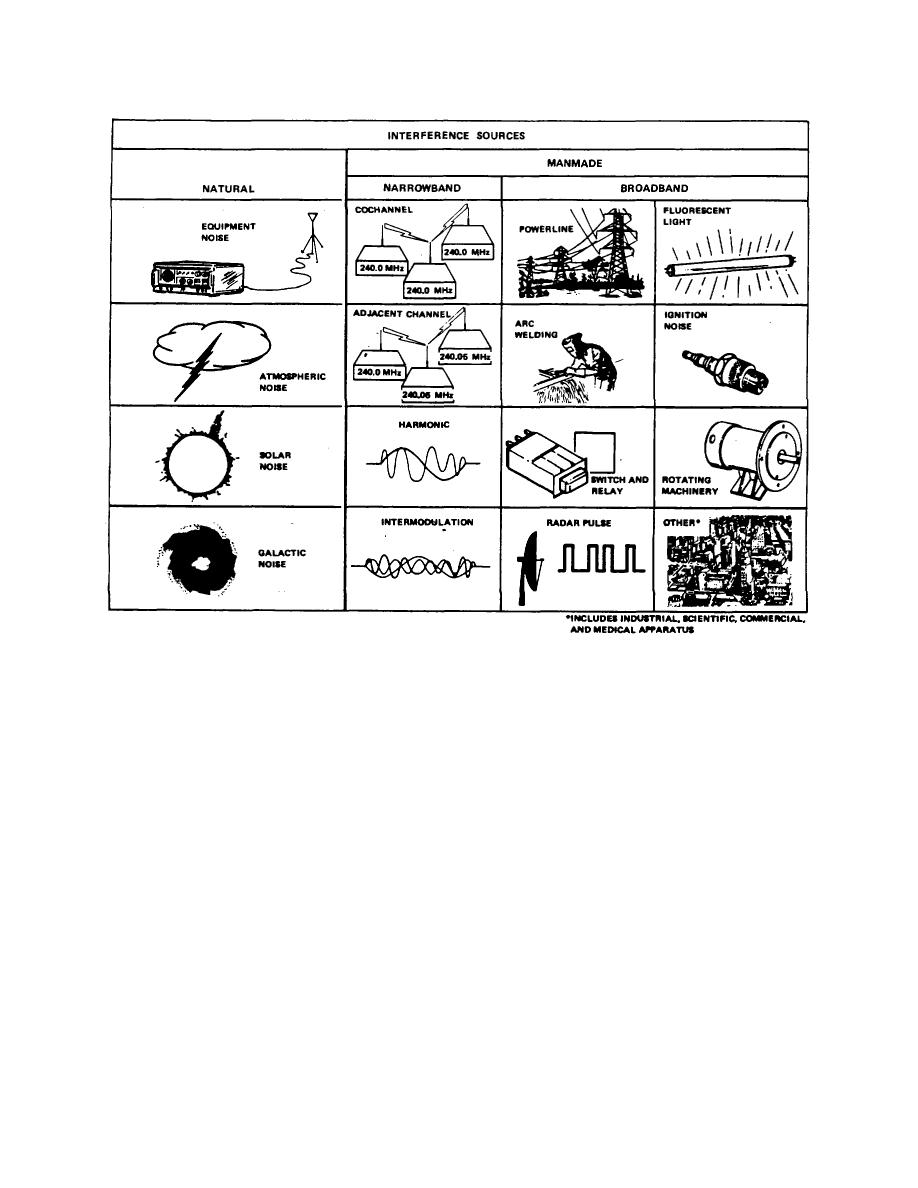 |
|||
|
|
|||
|
Page Title:
Figure 2-1. Typical interferences sources. |
|
||
| ||||||||||
|
|  TM 11-490-5
Figure 2-1. Typical interferences sources.
(2) Atmospheric noise. The primary source of
periods of high sunspot or solar flare activity and
decreases during periods of low activity. The periods of
atmospheric
noise
is
discharge
in
high activity may last several days at a time, and noise
thunderstorms, which may result in a type of radio
levels may be 10 to 20 dB greater than the levels
interference commonly referred to as static.
An
associated with low activity. During a sunspot or solar
additional source of atmospheric noise is precipitation
flare activity, noise will first be noticed at the higher end
static, produced by rain, hail, snow, or dust storms.
of the high frequency (HF) region, then at the lower end
Atmospheric effects are erratic in character, consisting
as the disturbance matures. At times, the RF spectrum
of short, randomly recurring bursts of noise which lack
of these outbursts is quite wide and involves a major
any regularity in phase or amplitude and which are
portion of the radio frequencies now in use.
spread throughout the RF spectrum. The average
power level of atmospheric noise is relatively constant
(4) Galactic noise. Galactic noise originates
over short periods of time, but may vary considerably
over longer periods of time. Atmospheric noise levels
beyond the solar system from a number of sources
depend upon such factors as frequency, time of day,
within the heart of the galaxy; that is, the Milky Way.
Galactic noise intensity varies with frequency and
season, equipment location, and weather conditions.
position within the galaxy, being strongest in the
Atmospheric noise becomes significant at frequencies
direction of the galactic center (the constellation
below 50 MHz, and dominates all other natural
interference sources below 30 MHz. This noise is
Sagittarius). On the surface of the earth, galactic noise
usually the limiting factor in communications below'30
is normally confined to ultrahigh frequency (UHF) and
MHz.
very high frequency (VHF) regions.
c. Manmade Interference Sources. Manmade
(3) Solar noise. Solar noise increases during
2-2
|
|
Privacy Statement - Press Release - Copyright Information. - Contact Us |